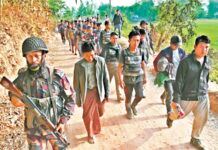Why is there such a severe shortage of medical supplies and facilities?

There seems to be no end in sight for people in the flood-hit northern and northeastern region of the country. Over 55 lakh people in 162 upazilas of 53 districts have been hit hard by the flood this year amidst the Covid-19 pandemic raging through the country, according to the National Disaster Response Coordination Centre (NDRCC). Now that the floodwater is receding in these regions, communities have to confront yet another challenge—a mass breakout of different waterborne diseases.
In most of the regions, flood victims were forced to drink floodwater without purification, which has led to diarrhoea, dysentery, vomiting, headache and other waterborne diseases among its populations. They are also suffering from various skin diseases, which is being compounded by waterlogging in many of these areas as entire communities have no choice but to wade through and live amidst dirty and stagnant water in their homes and compounds. According to reports from our correspondent in different districts, there is a severe shortage of medical facilities and supplies to address the increasing number of patients.
The authorities claim that they have formed medical teams to help communities, but it is apparent from the testimonies of flood victims that such help is woefully inadequate. Have districts been left to tackle this emerging health crisis in an ad hoc manner, or is there a comprehensive plan on how to provide support to flood-hit regions? We urge the different ministries to coordinate with each other, as well as with non-government initiatives, to provide systematic assistance on an urgent basis, allocating the necessary resources to each district and upazila. The people in the regions have suffered enough and are still facing great uncertainty—it is the responsibility of the state to ensure their well-being and rehabilitation to the best of its ability.









